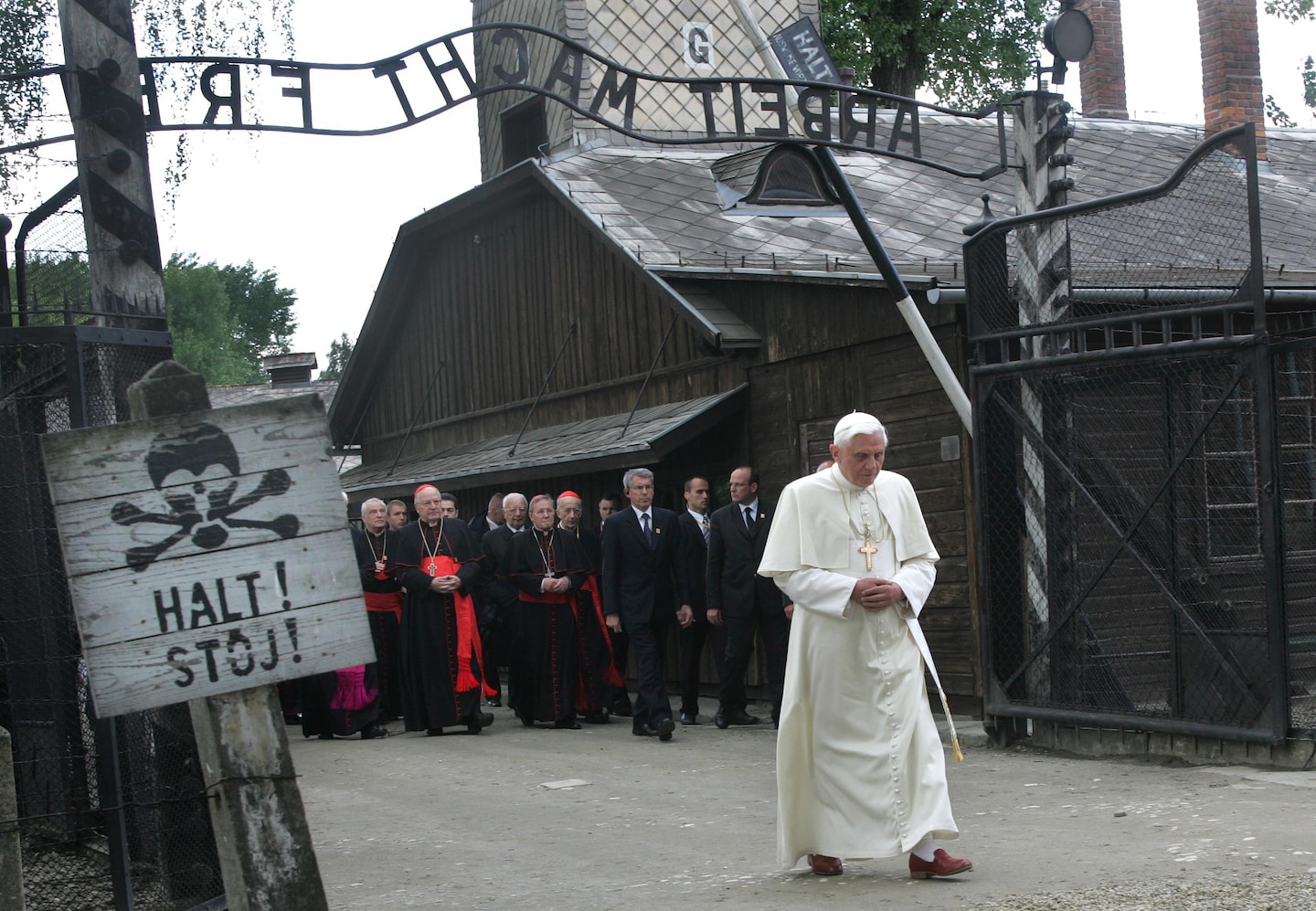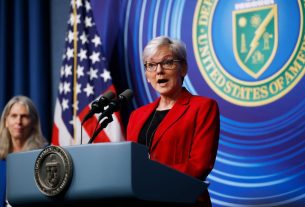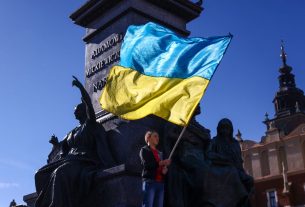He was 6 years old when Adolf Hitler seized power, 14 when required to join the Hitler Youth, 16 when conscripted into antiaircraft work in Munich and 21 when drafted into the German army.
That period of his life would prompt provocative headlines and draw intense scrutiny from international media. “From Hitler Youth to … Papa Ratzi,” ran the front page of Britain’s Sun tabloid after his selection as pope in 2005. Israel’s Yediot Aharonot offered: “White Smoke, Black Past.” Many news stories shared the same blurry photograph of a teenage Ratzinger, staring unsmiling toward the camera, wearing a uniform with an eagle over a swastika on his chest.
It was a sensitive issue for the Catholic Church, which had long struggled with criticism of its neutrality during World War II, with Pope Pius XII accused by some historians of being too weak in the face of fascist atrocities in Italy and Germany.
But the Simon Wiesenthal Center, a Jewish human rights organization that helped hunt Nazi war criminals, examined the young Ratzinger’s experiences and concluded he had little to be ashamed of. “The new Pope, like his predecessor, was deeply influenced by the events of WWII,” Rabbi Marvin Hier, founder of the center, said in an April 2005 statement. Hier noted that Benedict XVI, the first German pope in 1,000 years, “grew up in an anti-Nazi family” and had been “forced to join the Hitler Youth.”
By his own account, Benedict was required to register with the Nazi youth organization when he hit the mandatory age, but a teacher helped him avoid meetings — and the financial penalties that could have hindered his studies at a local seminary. He told his biographer, Peter Seewald: “Thank goodness, there was a very understanding mathematics teacher. He himself was a Nazi but an honest man, who said to me, ‘Just go once and get the document, so that we have it …’ When he saw that I simply didn’t want to, he said, ‘I understand, I’ll take care of it,’ and so I was able to stay free of it.”
He told Seewald that his antiaircraft assignment was “naturally not pleasant” but he spoke of a certain “camaraderie of the time.” While he was later sent into infantry service as the war continued, he later described it as brief and “relatively harmless.” He never served at the front and said he never fired a shot.
Benedict suggested that he deserted the German army toward the end of the war. He said that when American soldiers showed up in his village, “I was identified as a soldier, had to put back on the uniform I had already abandoned, had to raise my hands and join the steadily growing throng of war prisoners whom they were lining up on our meadow.” He was released from an American-run POW camp on June 19, 1945, and rode back home in a milk truck.
He was aware of the horrors of Nazism. Shortly after he became an archbishop in 1977, the future pope acknowledged that during this period he lived near Dachau, a concentration camp to which thousands were sent, among them Catholic Priests who preached against Nazi Germany.
“The whole thing disgusted us,” Archbishop Ratzinger wrote in one account, though he stated he did not know at the time that Jews had been sent to the camp.
The story of the young Ratzinger’s coercion into Nazi institutions is hardly unusual for Germans of his age. But some historians disagree with the idea it would have been impossible to resist.
Michael H. Kater, a professor emeritus at York University and author of the book “Hitler Youth,” said that many German youths managed to not join even after the government made membership an obligation and that there was “no such thing” as true mandatory service in the organization.
“So far, I have not come across any examples of someone who suffered critically because of such an attitude,” Kater said, noting that in a forthcoming book he details the story of two future journalists who were able to avoid joining the Hitler Youth without repercussion.
Kater noted that in general, Germans in Catholic areas like Bavaria, as the Ratzinger family was, were less inclined to support the Nazis. Cardinal Ratzinger appeared to agree in his 1997 interview, noting the issues his father, a police officer, had with the Nazi government.
“The Third Reich was terribly against his grain, and he tried to get out of service as early as possible,” he said, adding that his father had not openly opposed the government but had subscribed to a Bavarian anti-Nazi newspaper, Der Gerade Weg, that was banned in 1933.
Decades later, when he became the leader of the Roman Catholic Church, Benedict spoke of Nazism as an evil of which Germans were victims too.
Just a year into his nearly eight-year papal term, he toured the Nazi death camp at Auschwitz near Oswiecim, Poland, where 1.5 million people are estimated to have been killed.
Speaking in Italian, Benedict said it was “particularly difficult and troubling for a Christian, for a pope from Germany” to visit the site, which he had already toured twice as a cardinal.
He called himself “a son of people over which a ring of criminals rose to power by false promises of future greatness and the recovery of the nation’s honor, prominence and prosperity, but also through terror and intimidation, with the result that our people were used and abused as an instrument of their thirst for destruction and power.”
“He genuinely feels that German society was a victim of Nazism,” said Rabbi David Rosen, the international director of interreligious affairs at the American Jewish Committee.
John McGreevy, a historian of the modern Catholic church at the University of Notre Dame and author of “Catholicism: A Global History From the French Revolution to Pope Francis,” said that it was clear Benedict was influenced by growing up under an authoritarian regime.
“He read a great deal about conscience and rights of conscience and was alert to the ways in which ideologies alien to the church could infiltrate and disarm its structures,” McGreevy said.
But there were decisions made that tested the Catholic Church’s relationship with the Jewish community.
Under Benedict’s leadership, the Vatican loosened the restrictions on use of the old Latin Mass, which includes language many Jewish groups considered antisemitic and lifted the excommunication of a notorious bishop who denied the extent of the Holocaust.
In Germany, where denial of the Holocaust is illegal, the latter move caused particular concern.
“It is a fundamental question if, through a decision by the Vatican, the impression arises that the Holocaust can be denied,” German Chancellor Angela Merkel said in 2009.
David Kertzer, author of “The Pope at War: The Secret History of Pius XII, Mussolini, and Hitler,” said Pope Benedict had not dug deep into the Catholic Church’s conduct during the war.
“He basically defended the narrative that the church, the Vatican, had crafted right after the war. That they had been steadfastly anti-fascist anti-Nazi and a stalwart opponent of those regimes and of the war,” Kertzer said, noting that in 2009 he had declared Pope Pius XII “venerable” — a step towards beatification — despite the ongoing controversy over his record on the Holocaust.
Rosen, who knew Benedict personally since the late 1980s, said that Benedict’s quiet personality was often misinterpreted as aloofness and coldness. Though he was gentle and had a sense of humor, he was also shy and retiring, and often saw the relationship between Christians and Jews in respectful theological tones.
In part due to the focus on Benedict’s early life in Nazi Germany, most Jews had “no idea how much of a genuine friend of the Jewish people” he was, Rosen said.



